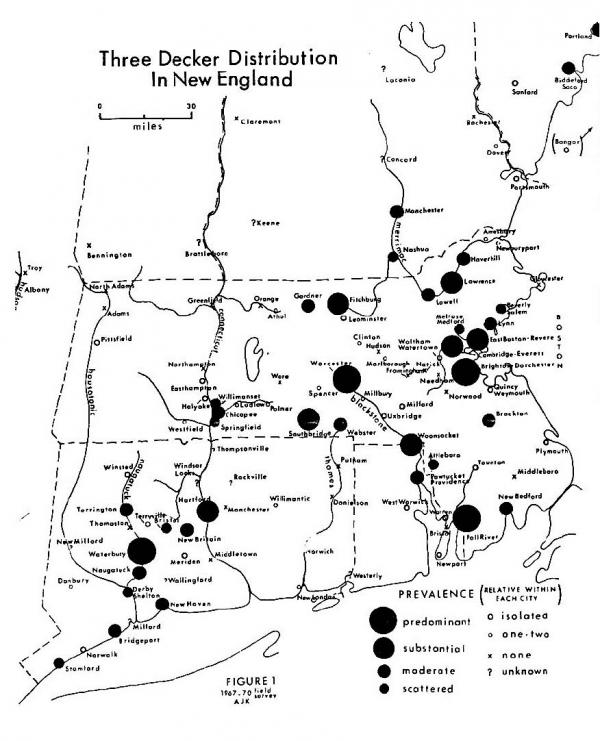May 3, 2018

The term three-decker, or triple decker, as some say, is still a point of controversy in some corners of the city today. While both terms for the iconic housing stock have been used interchangeably for the past generation or so, three-decker came first and reigned supreme until some thought the embattled housing form needed a rebranding.
In her presentation at a conference on the topic this week, “The Past – A Housing ‘Menace’ –Boston’s Three Deckers through 1930,” independent museum consultant Deedee Jacobsohn, Ph.D. broke down the evolution of the three-decker name for those who attended the all-day conference last Friday at All Saints’ Parish.
Regionally, there are plenty of names for three-story multi-family houses: three-flats, three-story row-houses, simple three-family homes. But in the Northeast, which has the highest proportion of wooden-framed three-decker housing, the style became a staple.
Stemming from the three-decker warships ships in the 17th century, over time the term was applied to buildings. “This was the 17th century, by the time of the Civil War, these ships were already outdated,” Jacobsohn said. “The term started to be applied to anything that had three levels, not just houses.”
But the humble three-decker was going through a stigmatization in the early 1900s when the term itself became associated with tenement buildings. Housing organizations, partnering with the Immigration Restriction League, claimed these often immigrant-owned buildings were made with balloon framing, were structurally shoddy, susceptible to fire, and had crumbling roofs and chimneys.
The Massachusetts Civil League and the State Housing Committee wrote in a 1911 annual report that “Foreigners are coming in increasing numbers, and with them are also coming the shack, the converted house which has seen better days, the familiar frame tenement, and the wooden “three decker” which, besides being objectionable on other grounds, is a flimsy fire-trap and a menace to human life.”
“Triple decker” is a more recent name for the ubiquitous housing stock. Until the 1920s, Jacobsohn notes, a triple decker was a sandwich, not a home. But with the resistance to the structures, now seen in need of a rebranding for new homeowners, “triple-decker” come into common usage around the 1960s.
Brochures in the 60s and 70s referred to the houses as “triple deckers.” A promotional campaign published in 1978 by Mayor Kevin White administration encouraged prospective buyers ”in this time of spiraling housing costs» to take “a second look at the advantages of triple-decker housing.”



